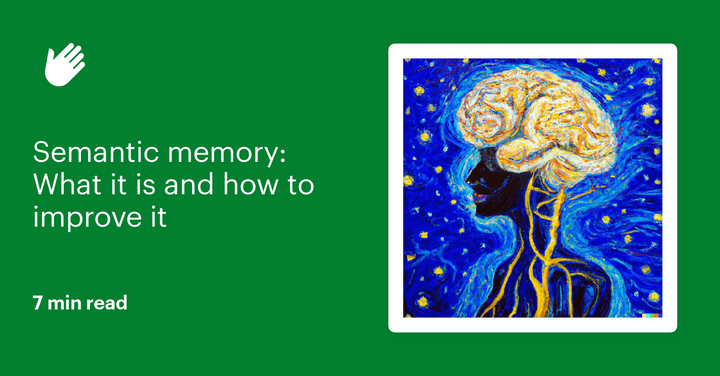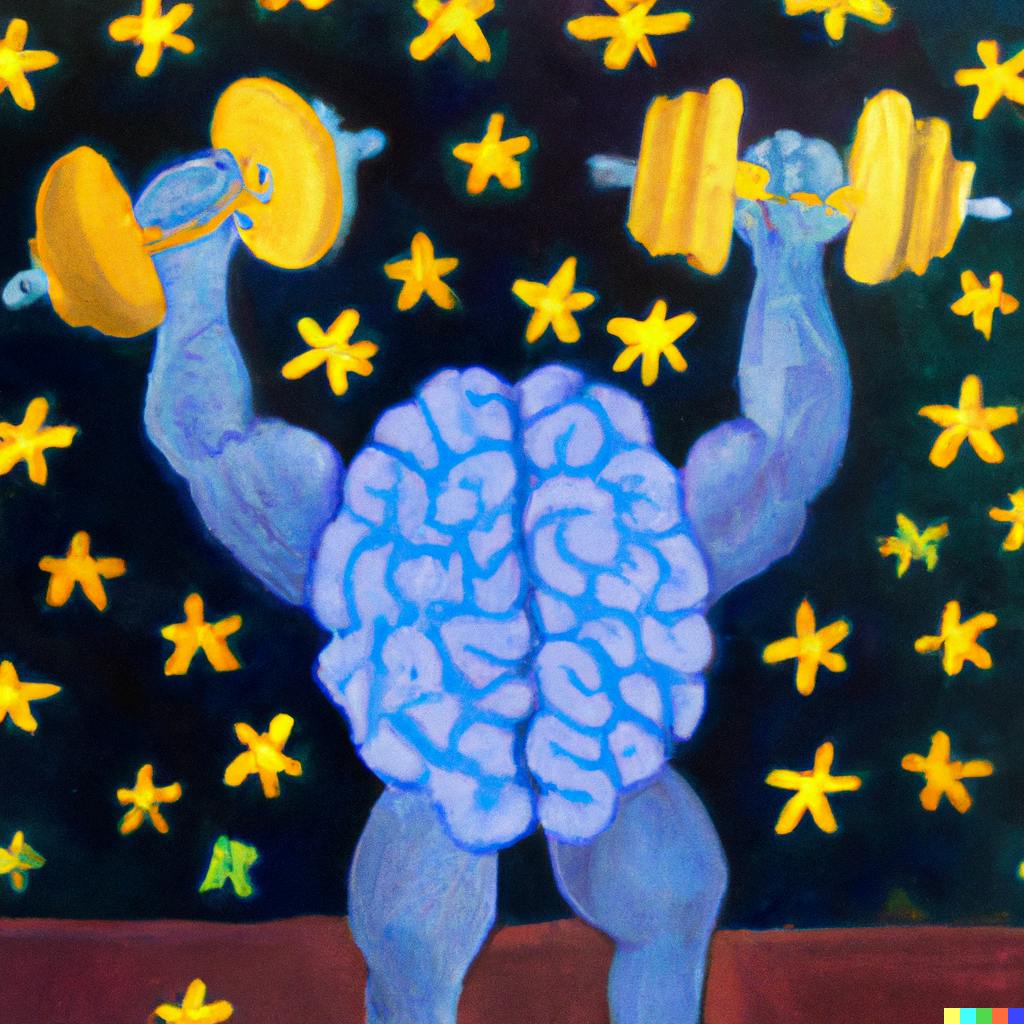Semantic memory: What it is and how to improve it

When you think about it, long-term memory is practically a superpower—a seemingly boundless container of knowledge that allows you to remember past events, communicate, and understand the world around you.
However, long-term memory isn’t just one thing. It’s made up of different parts, all working together to create a more fully functioning whole. One of the most important parts of your long-term memory is your semantic memory. It helps you remember concepts, ideas, and facts about the world so you can better understand the events happening all around you.
By strengthening your semantic memory, you can improve in many areas of your life, including communication, information recall, and critical thinking. This guide will help you better understand what semantic memory is and how to improve it, so you can accurately recall facts and figures more easily.
Quick navigation links
- What is semantic memory?
- Why is improving your semantic memory important?
- Who should be improving their semantic memory?
- How to improve your semantic memory
What is semantic memory?
Semantic memory is the part of your long-term memory devoted to remembering numbers, words, and concepts.
It’s essentially your brain's dictionary. Every time you need to remember a concept and put it into words, your semantic memory is at work, recalling what ideas are called and how they relate to other concepts. So whether it’s understanding a conversation, a book, or an ad on the side of the road, your semantic memory is helping you decode the world around you.
What is the difference between semantic and episodic memory?
While semantic memory covers facts and figures, episodic memory refers to remembering events that happened to you in the past.
For instance, semantic memory helps you remember what the word “water” refers to and that it boils at 212°F, but it won’t help you recall the time you fell into the lake at camp. The latter is an episodic memory.
Why is improving your semantic memory important?
Improving your semantic memory is important because it helps you better communicate and understand how the world works. Building the strength of your semantic memory will let you do both of these tasks more effectively. As your semantic memory improves, you’ll be better able to recall concepts accurately and see how a concept is related to many others.
Consider how your semantic memory helps you remember core physics principles—like gravity, lift, and drag. So when you see an airplane taking off, you not only can identify what it is but also explain to a child why it doesn't immediately fall from the sky.
A strong semantic memory offers benefits beyond recalling details. It also helps you:
- Learn new concepts: As your ability to connect concepts improves, it’ll make learning new things easier, even as you age.
- Develop unique insights: Sometimes, all it takes to have that brilliant eureka moment is a leap of logic. Boosting your semantic memory can help you do just this.
- Fend off neurodegenerative diseases: Studies have shown that the mental stimulation involved in improving your semantic memory can also help you reduce your chances for diseases like Alzheimer's.
- Correct memory biases: You may not know it, but there is probably a lot of fake news floating around your brain. Improving your semantic memory can help you recognize and correct these memory biases that are holding you back.
Who should be improving their semantic memory?
The short answer is—everyone. A better semantic memory is helpful at all stages of life as it’s integral in everything you do. Whether you’re chatting with your neighbor or reading the paper, you’ll need to flex your semantic memory to have any hope for success.
If you’re a student, better semantic memory will help you learn new materials and recall information for tests. Likewise, working-age people will use an improved semantic memory to learn and adapt to new trends or knowledge in their field.
How to improve your semantic memory
So you're convinced that improving your semantic memory is well worth the effort. But where do you start? Well, here are a couple of ways to truly flex your semantic memory muscles.
Learn a new language
When you learn a new language, you’re building your ability to recall words—a key part of your semantic memory.
Say you’re a native English speaker. When you see a plank of rectangular wood with four legs at the park, your brain thinks “bench” without hesitation. You know this term well, so this recollection isn’t pushing your semantic memory.
But now consider a native English speaker who’s learning Arabic. They see the plank of wood, and it may take a minute or two to think of the term “maqead.” Their brain might think of parts of the word—like the letter “m” or the “ead” sound—before it pieces together the parts and remembers the term.
While sometimes frustrating, these tough recall moments are the building blocks of a strong semantic memory, as they can help your brain grow. As one study found, people who had learned another language had more gray matter or connections between the different neurons in their brains than people who hadn’t. These increased connections are how your brain processes information and connects different concepts you learn—the more you have, the stronger your semantic memory should be.
Relate new concepts to old concepts
When you learn about a new word or concept, the idea doesn't immediately go into your long-term semantic memory. Instead, it initially stays in your short-term working memory, and you need to engage with the idea in a way that helps you retain it.
One option is to relate the new idea to a concept already in your long-term memory.
Say you’re learning about black holes for the first time. You probably won’t remember much if you just read a scientific paper on them. However, if someone explains that a black hole is like your sink drain pulling in energy, that’s far easier for you to grasp. Your brain can associate black holes with drains, and you’ll be far more likely to understand and remember this concept well into the future.
One famous example of how to relate new concepts to old ones is the memory palace. This memorization technique has people associate things they want to remember with a place they’re incredibly familiar with, like their childhood home or school.
By relating a new concept to something already in their semantic memory, it’s easier for people to remember the new idea for longer.
Keep yourself mentally and physically in shape
One of the biggest factors in improving your memory is making sure that your body is in tip-top condition. When you aren’t feeling 100%, your semantic memory can be greatly impacted.

Here are just a couple of ways that poor physical shape can affect your mental fitness:
- Lack of sleep: Sleep plays a vital part in memory formation. Cutting short your sleep hours could make it more difficult for you to remember the things you learn throughout your day.
- Hunger: Being hungry doesn’t just make you angry—it can also impact your memory. According to one study, the hormone caused by hunger can actively block memory formation in rats.
- Stress: Stress affects memory in a number of ways, both good and bad. But, generally, being stressed out makes it harder for you to move new pieces of information into long-term semantic memory.
On the flip side, exercise helps strengthen your semantic memory. According to an experiment performed by Cambridge University, a single bout of exercise can help increase brain activation involved in semantic memory.
So whether it’s going for a run in the afternoon or making sure you’re getting enough sleep at night, taking care of your physical health is a great way anyone can work on their semantic memory.
Learn how to strengthen your memory as a whole
Without your semantic memory, you wouldn’t be able to talk, read, or understand everything happening around you. However, semantic memory isn’t the only important memory process you should be looking to improve. There are all types of memory worth improving.
Procedural memory is an incredibly vital part of the memory process as it allows you to build the habits and patterns you rely on to complete complex tasks every day. Think tying your shoes or riding a bike. Learn more about how to boost this core memory capability in our guide to procedural memory.
